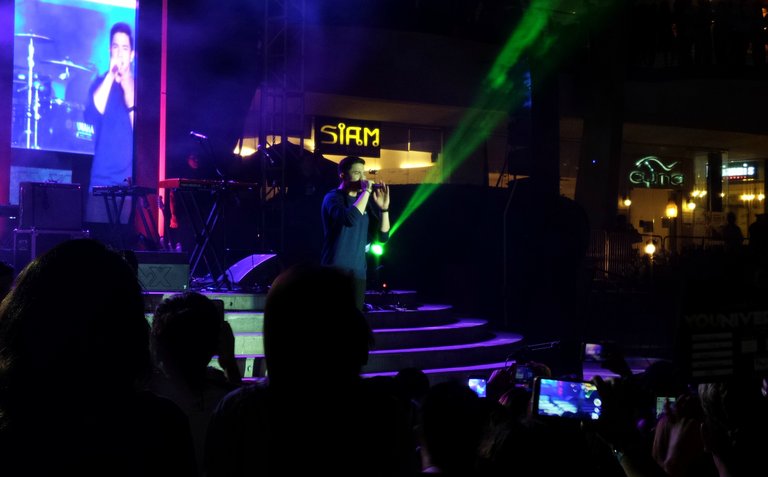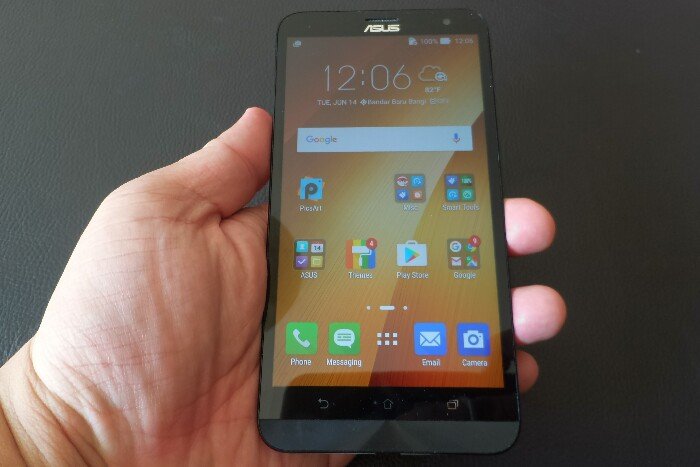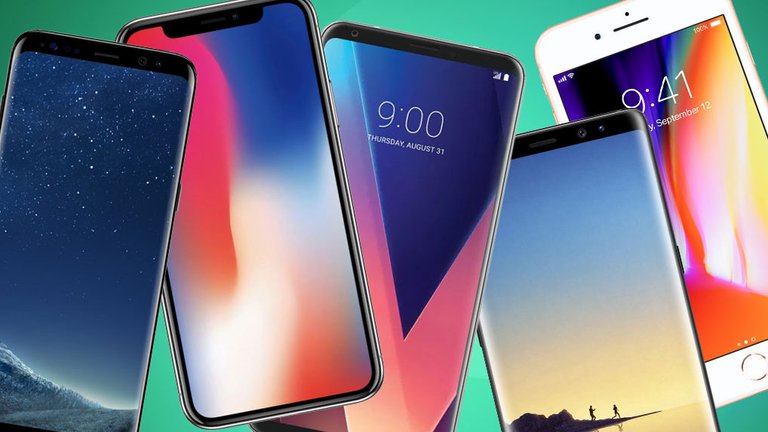Gig photography is the worst for many reasons. The subject won't stay still, you have to fight to get where you want to be, and the lighting's terrible.
But by far the biggest problem is the lighting, it's just beyond the physics of photography for gig photography to be easy. Photographing at night or in low-light conditions is easy with flash, but flash is annoying to everyone there, and makes your pictures butt-ugly.
If you try it without flash, then even the fastest film rating is no good unless you're close enough for a close-up.
Best technology for photographing gigs
Gig photography can be satisfying when you get the shot that you're going for, but it's no place for amateurs. This is why I never understand the number of small digicams, and cell phone cameras going off at gigs. You'd think the people taking those pictures would see that their results left a lot to be desired and give up and enjoy the show.
On the other hand, there's something about being spitting distance from a famous musician that makes people want to take pictures of it. The makers of these small cameras put a lot of thought into figuring out the circumstances under which their products will be used, so as physically impossible as it may seem, maybe they have come up with a solution to making gig photography easy.
Use a smartphone to photograph gigs
I was at a gig several weeks ago, and I thought I'd try a small experiment. The gig was a nightmare scenario for photographers for all the reasons I outlined above, plus there was at least four official gig photographers crawling around what was a very small performance area, fighting one another for a good spot.
I'd gone originally to take pictures, but I took one look at the setting, and decided to just enjoy the show.
That's when I noticed that several audience members were taking pictures with their various iPhones, and smartphones; and looking over their shoulders, I saw that they were getting decent results. So I thought I'd try it out for myself.



Look at my photos above, it's not great, i know, but it's certainly better than I was expecting. What really impresses me is that it's almost in focus; with so little light for the auto-focus to use to figure out what it was focusing on, this is nothing short of miraculous.
As recently as five years ago, a mid-range DSLR would've had trouble getting this result without an assist lamp and no flash.
Bear in mind that my smartphone phone is a mid-range Asus Zenfone; I could see better results coming from what I assume were high-end smartphones, like iPhones. It seems as if the makers of these devices have put a disproportionate amount of effort into making this work.
Being a late adopter
In all technology, we have a tendency to measure progress by what the high-end products can do, but most of us will never own the high-end product. The majority of us are what the marketers call "late adopters."
As the name suggests, that means we are late to adopt new technology, and by the time a high-end product gets to us, it's no longer high-end. Perhaps we should measure technological progress by what the products that the average consumer can do.
We late adopters usually justify our habits by thinking that when the early adopters buy the new thing on the market, they're buying it before all the kinks are worked out, and that they're getting an imperfect product; whereas we're getting something that's been tried and tested in real-world conditions.
But it's not until you're in situations like the one at the gig that you see the how significant the benefits of being a late adopter are.
There's been cameras on phones for at least a decade now, and for most of their history they've been next to useless in any situation without one-hundred percent ideal lighting conditions. If you'd avoided owning a camera-phone until now, you'd never have owned this technology this pointless technology.
At this point you're probably wondering how a technology being not up to scratch applies to the late adopters. After all, it's a technology anorak's job to criticize technology, not the late adopter's; if the late adopters cared that much about technology, then they'd be interested in getting the new technologies as soon as they hit the market, and they wouldn't be late adopters.
But, remember that the late adopter is the average consumer, and that they're not going to be too impressed with a camera that doesn't do any of the things that cameras are meant to do, just because it's new and there's kinks to work out. They're not as used to being forgiving like the early adopters.
Smartphones - will they last?
And remember that almost immediately after camera-phones came out, it was near-impossible to get a cell phone without a camera. If the makers of these products had waited until now to make it that way, then all us late adopters would be experiencing a technology that surpassed all of our expectations, instead of putting up with ten years of a technology that made us all wonder what it was there for.
Going back to the situation that sparked off this article. I suspect that with a mix of skill and luck, one could take some very good, publishing-quality gig photos with a cell phone camera.
Has anyone done this?
Because I'd like to hear about it.




This post was shared in the Curation Collective Discord community for curators, and upvoted and resteemed by the @c-squared community account after manual review.